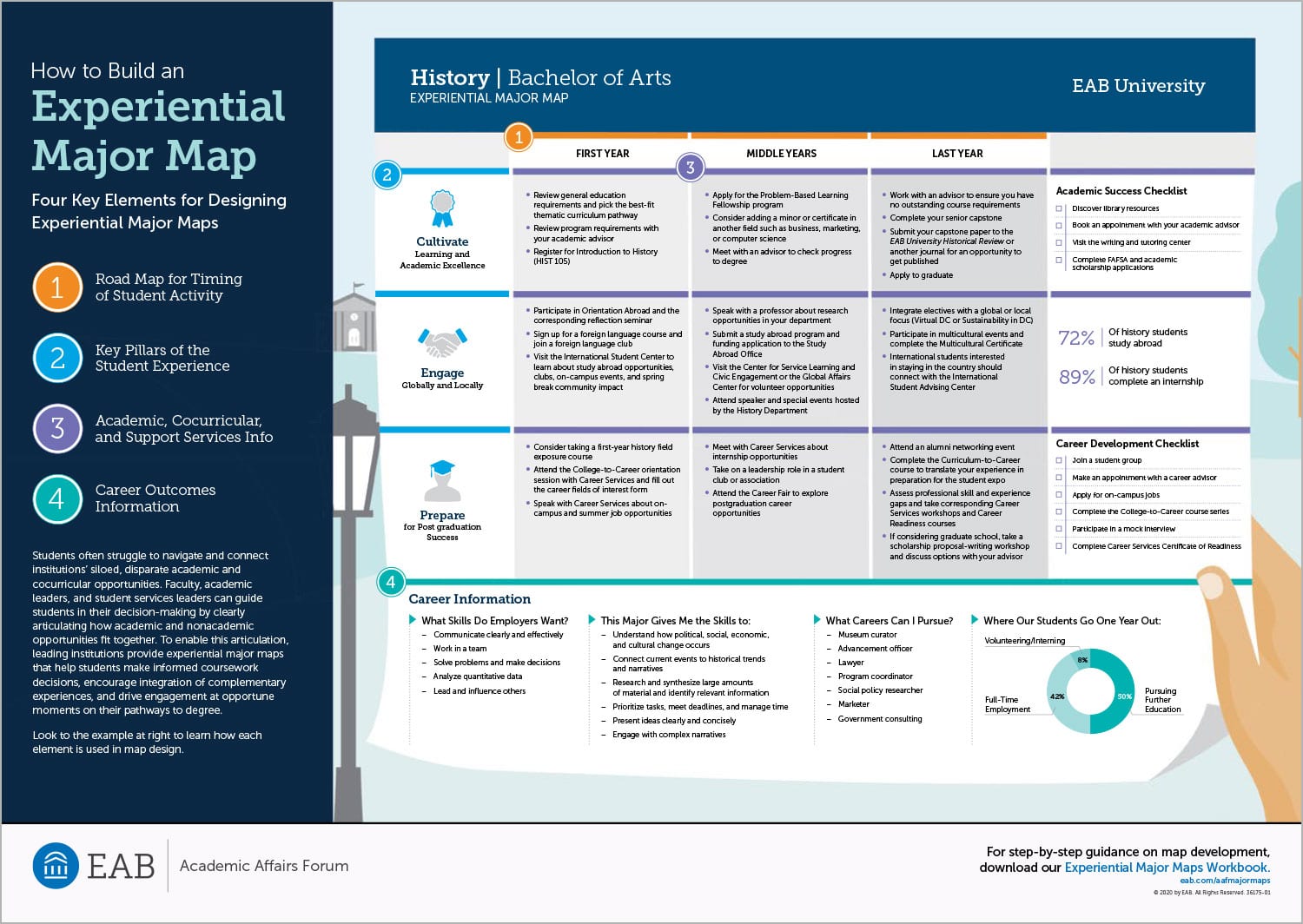Students often struggle to navigate and connect institutions’ siloed, disparate academic and cocurricular opportunities. Faculty, academic leaders, and student services leaders can guide students in their decision-making by clearly articulating how academic and nonacademic opportunities fit together. To enable this articulation, leading colleges and universities provide experiential major maps that help students make informed coursework decisions, encourage integration of complementary experiences, and drive engagement at opportune moments on their pathways to degree.
Unfortunately, those maps rarely guide students beyond picking courses. Innovative institutions have gone beyond the academic degree map with experiential major maps, comprehensive plans that align course requirements with co-curricular and experiential learning opportunities. More beneficial experiential maps can help students explore majors, reflect on the career-relevant skills they are gaining, get hands-on experience in preparation for jobs and graduate programs, and see career paths available to each major.
The four key elements for designing a beneficial major map are:
- Roadmap for timing of student activity
- Key pillars of the student experience
- Academic, cocurricular, and support services information
- Career outcomes information
Look to the example on this infographic to learn how each element is used in map design so that your institution can build experiential major maps.
More Resources

Student Experience and Well-being Resource Center

Enhance the Student Experience and Career Readiness with Course and Major Maps

